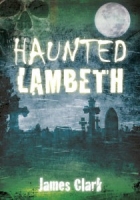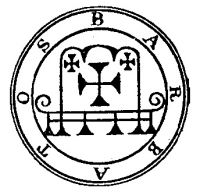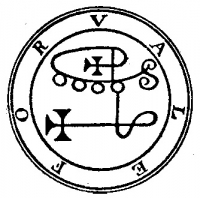Netta Fornario: Iona’s Occult Mystery
Iona is a small island off the West coast of Scotland with a long religious and mystical history. In the late 1920s it was the scene of the mysterious death of Netta Fornario. Her motives and the manner of her passing have been the subject of much debate over the years.
Norah Emily Editha Fornario (known as Netta Fornario) is unfortunately more famous for the strange circumstances of her death than for her achievements in life. Her body was found on a Fairy Mound on the South of Loch Staonaig, Iona (see map below) in mid November 1929. She was found naked, apart from a black cloak, lying on a large cross that had been cut from the turf with a knife that was close at hand. A blackened silver chain with a cross hung around her neck and her body showed some unacountable scratch marks. Her death certificate shows she died between 10.00pm on 17th and 1.30pm on 19th November 1929. She was 33 years of age, and the cause of her death was recorded as ‘exposure to the elements’, not heart failure as is often misquoted.
Netta was a student of the occult and a member of the ‘Alpha et Omega’ Temple. This was the name given to the branch of the Golden Dawn that remained loyal to Samuel Liddell MacGregor Mathers after it was closed in 1906. She was a close friend of fellow member Dion Fortune who referred to Netta as “Mac”. According to popular belief she did not especially get along with father who was a medical practitioner and Italian national. Her mother was English.
As an initiate of a magical order and student of the occult Netta believed she could cure people with telepathy. Prior to her death she sent a message to her housekeeper ((by conventional means one would assume, Ed)) (at her residence at Mortlake Road, Kew, London) from Iona, stating not to expect to hear from her for some time as she had “a terrible case of healing on”.
She departed for Iona in either August or September 1929 taking with her a large amount of luggage, which apparently included furniture enough for a small house. Upon arrival she took up lodgings with a Mrs MacRae in Traymore.
Netta used to roam the beaches and moorland of the island each day, and attempt to contact the ‘spirits’ of the island each night through trances. She had confided with Mrs MacRae that prior to visiting the island she had gone into a trance that lasted a week, which of course alarmed the islander. Furthermore Netta had instructed Mrs MacRae that should she enter another such trance state, no doctor should be called for.
On Sunday 17th November 1929 Netta started to act more strangely: She was out of bed early and started packing her belongings with the intention of returning to London immediately. She told Mrs MacRae that certain people were disturbing her telepathically, and then commented on a rudderless boat that went across the sky and messages she had received from other worlds. No doubt this caused a few raised eyebrows with Mrs MacRae, however she did notice that Netta’s silver jewellery had turned black overnight.
As was the case until very recently boats did not operate a Sunday service and Netta was forced to wait on the island. Sometime on Sunday she went into her room, when she returned a short while later she seemed calmer with what was described as a look of resignation on her face. She told Mrs MacRae she had changed her mind and would remain indefinitely on Iona.
Netta was noticed to be missing on Monday morning and was eventually found the day after close to an ancient village ruined village she had expressed in interest in, but never visited. She was buried by the islanders the following Friday. Stories of strange blue lights were reported to have been seen near her body along with a man in a cloak.
Given the manner in which Netta was found it is probably safe to assume she was attempting some kind of ritual, possibly a kind of astral projection as hypothesised by Dion Fortune. Dion actually went further and accused Moina Mathers, leader of the Alpha et Omega Temple (following her husbands death) of the murder of Miss Fonario through psychic attack. She certainly couldn’t have physically killed Netta, as Moina had died sixteen months earlier. Dion thought the scratch marks on Netta were similar to those on people she believed had previously been psychically attacked by Moina, although she would not have seen them herself.
I think it is also safe to assume that given she was naked on an exposed mound in the middle of November, regardless of her mental state or perhaps because of it, that she succumbed to exposure/hypothermia.
Iona History and Legend
Iona is a small island, roughly 3.5 miles long and one mile wide which lies off the west of Mull. In 563AD St Columba (grandson of the Irish King Niall) and 12 followers built their first Celtic Church on the island and monastic community. Iona became famous as St Columba started converting Scottish and English pagans into Christians. Iona also became the resting place of Kings and according to a survey in 1549 it boasted 48 Scottish Kings, 8 Norwegian and 4 Irish. Amongst the Scottish kings buried on Iona are King Kenneth I, Donald II, Malcolm I, Duncan I, Macbeth and Donald III.
Columba banished women and cows from Iona stating “where there is a cow there is a woman, and where there is a woman there is mischief”. (Obviously an ancient champion of equality) The women of the abbey builders had to stay on Woman’s Island (Eilean nam Ban).
It is claimed that Columba needed to bury a living person in the foundations of the chapel and a friend of his called Oran volunteered. Oran was therefore duly buried alive. Columba asked later that his face be uncovered so that he could bid his friend farewell. Oran was still alive, understandably upset, had probably changed his mind and started to blaspheme, so Columba had him covered up again.
Around the end of the 8th Century AD the famous Book of Kells was produced on the island. Around this time the first Viking raids started which killed many of the monks and saw many of their treasures stolen.
In 1203 the Order of the Black Nuns under Prioress Beathag, daughter of Somerled established a convent on Iona and the Benedictine Abbey was built around the same time. Following the reformation the abbey remained in ruins until 1899.






Recent Comments